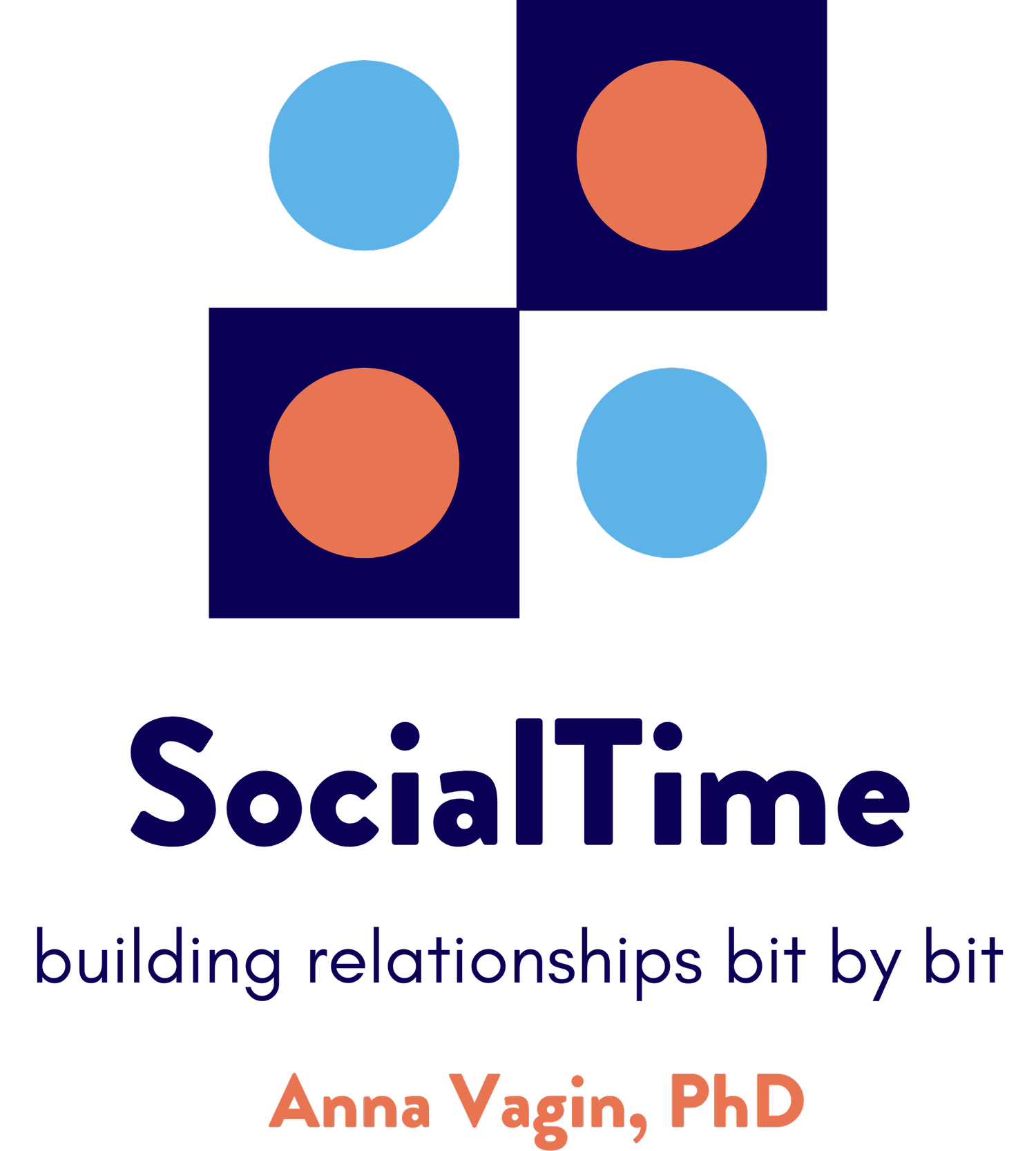Introducing a group to CPPEV
Conversation Paths - a visual framework for conversation
Recently, I received an email from a clinician curious about how I introduce students to CPPEV – my conversation curriculum. I thought more of you might be interested in my answer, so here it is! 😊
I had a group of three 5th graders who have been together for a while. They all have a bit of anxiety 😬, as well as lots of energy ⚡. In listening carefully to their conversations, I noticed that, while they often made comments that were relevant to their own experiences (e.g., “I love Mark Rober on YT 🎥,” “My sister is SO annoying 🙄”), they rarely made comments about what others were saying. I thought experimenting with CPPEV might open them up to using this conversational frame in a more contingently reflective way. So…
Step 1: I pulled up a Path that was set up with their names and included comments. I explained that I would move the colored circles 🎨 to indicate who would do which part of the path, and then we would switch 🔄. I also explained that I often heard them making comments about their own experiences, and this activity would give them a chance to explore making comments about what others were saying. They were game! 🎉 Since it was their first attempt, I added text boxes with what they said so they could easily refer back and remember where they were in the conversation. Here’s the first Path they went through:
Step 2: After a few weeks, these students had progressed to more complex sentence frameworks. And they no longer needed the text boxes! 🎯 They still sometimes struggled a bit when needing to ask a question, so I left the questions “cue card” as a reference. 📝
Step 3: I also wanted to incorporate mental state verbs (MSV) into their practice with comments, so we used the I think/I know template from the CPPEV Practice Activities. We modified it a bit and worked on expanding what we knew about someone to what we might be curious about. 🤔💡
For these students, CPPEV provided a visual framework they could easily follow. The semi-structured format allowed them to talk about whatever they wanted while knowing exactly what (and how much) was expected of them. 🎯🗣️
If you’re curious about CPPEV and wondering if it might be right for your students, I invite you to come to Office Hours next month when we consider: So how is your work in conversation going? 💭✨
Until next month, stay dry and cozy! ☔🧣



